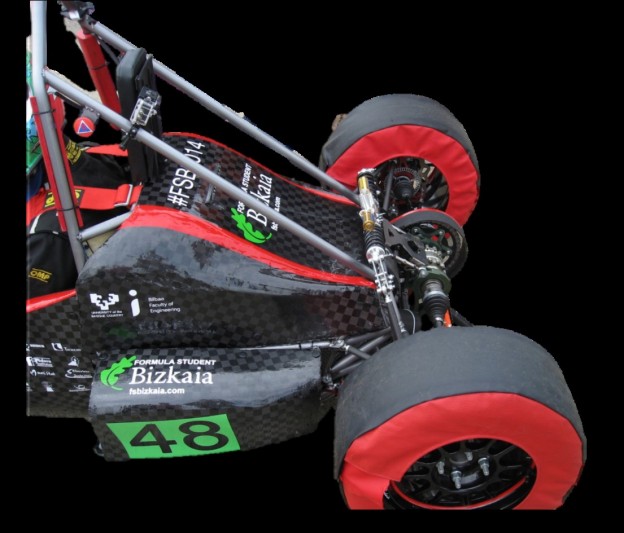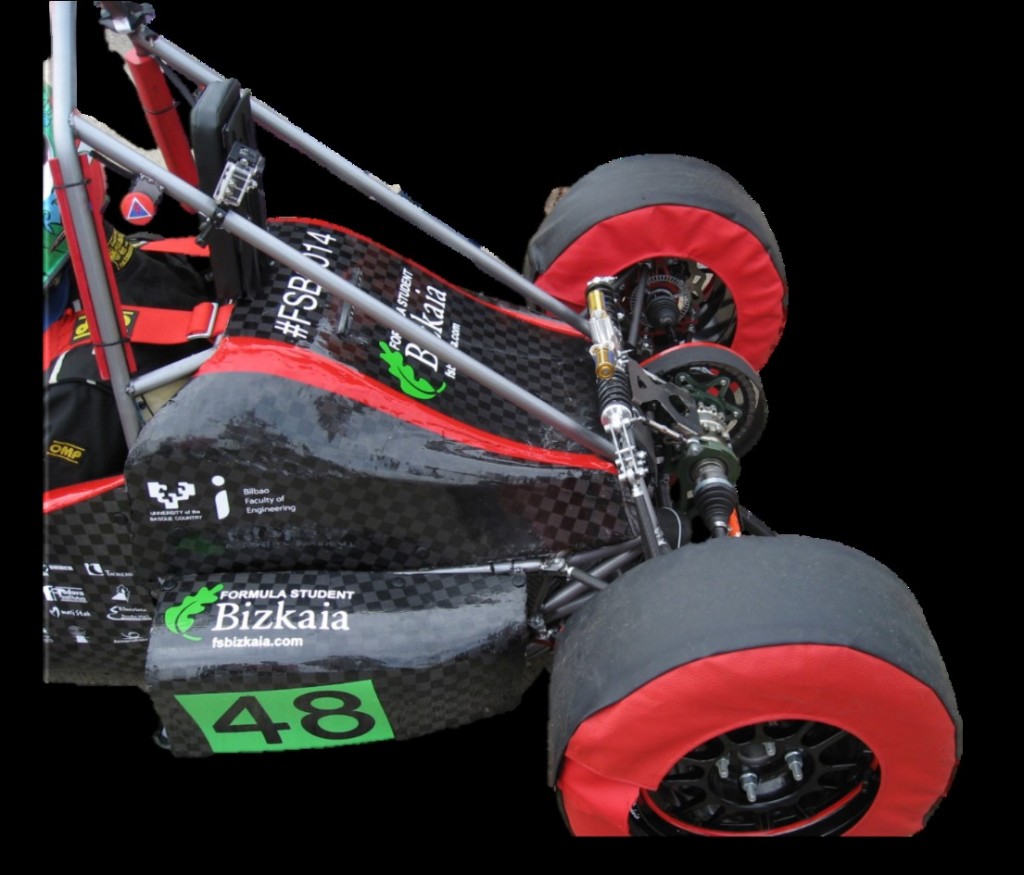El grupo Powertrain liderado por Iosu Erauskin y cuyos miembros son Markel Alaña, Cristina Gutiérrez, Ander Aizpuru, Aitor Arana, Alejandro López, Ainhoa Garmendia, Ana Martín, Jon Altuna, Iñigo Señorans y Xabier Larrañaga abarca la realización de una extensa parte del coche.
Una de las responsabilidades de este grupo es la parte de alta tensión (HV), la cual está compuesta por las baterías (colocadas en el accumulator container), el inversor (elemento imprescindible para el control del motor y la conversión de la tensión continua proporcionada por las baterías a a la trifásica requerida por el motor) y el motor eléctrico del monoplaza. Para unir estos elementos entre sí , es necesario un sistema de cableado bien organizado, además de un sinfín de elementos de seguridad como el IMD (sistema de monitorización del aislamiento eléctrico) o el HVD (sistema de desconexión manual del circuito de alta tensión).
Uno de los principales objetivos de éste año con respecto a esta sección es la optimización del accumulator, tanto en la distribución de los packs de baterías y la electrónica como en el volumen que ocupa y la geometría que resulte más beneficiosa del mismo.
Sin embargo las tareas de este grupo no acaban aquí, dado que el movimiento del motor ha de ser transmitido a las ruedas mediante la transmisión. Entre los elementos más importantes destacan el diferencial autoblocante, la correa que transmite el movimiento al eje trasero y los palieres que junto a las juntas homocinéticas se encargan de transmitir el movimiento a las ruedas. Los objetivos a conseguir son una transmisión fiable, ligera e insonora manteniendo siempre un gran rendimiento.
De igual modo, el sistema de tracción requiere de un sistema de refrigeración que evite el recalentamiento del motor e inversor. Éste está compuesto por la bomba y el radiador. La bomba es necesaria para hacer circular el líquido, mientras que el radiador se encarga de volver a enfriarlo.
The power train group is led by Iosu Erauskin and its members are Markel Alaña, Cristina Gutiérrez, Ander Aizpuru, Aitor Arana, Alejandro López, Ainhoa Garmendia, Ana Martín, Jon Altuna, Iñigo Señorans and Xabier Larrañaga. Their duties involve the design and manufacture of the powertrain system, which groups a large set of subsystems.
One of the responsibilities of this group is the High Voltage (HV) tractive system. This system groups the batteries (located in the accumulator container), the motor controller or inverter (essential element for the control of the tractive poder and the conversion of the continuous voltage proportionated by the batteries into the three-phase needed by the motor) and the electric motor of the vehicle. In order to hold all this elements together a well organized wiring is necessary, in addition to a large set of security decides such as the IMD (Insulation Monitoring Device) or the HVD (High-Voltage Disconnect).
One of the main important objetives of this year regarding this section is the optimization of the acumulador contamine, aimimg to reduce its weight. This optimization will affect the distribution of the batteries and the electronics and the required space and geometry.
Nevertheless the tasks of this group go even farther due to the fact that the motion of the engine must be transmitted to the tires trough a mechanical transmission. The most important elements in this subsytem ares the limited-slip differential, the transmission belt used for the movement of the back axle and the bearings that added to the homo-kinetic joints are responsible of the transmission to the tires. In the design of the new transmisión sostén for the FSB2015, the goal is to achieve a reliable, light and soundless transmission, while maintaining a great performance.
Moreover, the traction system requires a refrigeration system to prevent the motor and inverter from overheating. A bomb and a radiator are in charge of this duty. The first one is used to pump the liquid though the refrigeration circuit and the second one to reduce the temperature.


